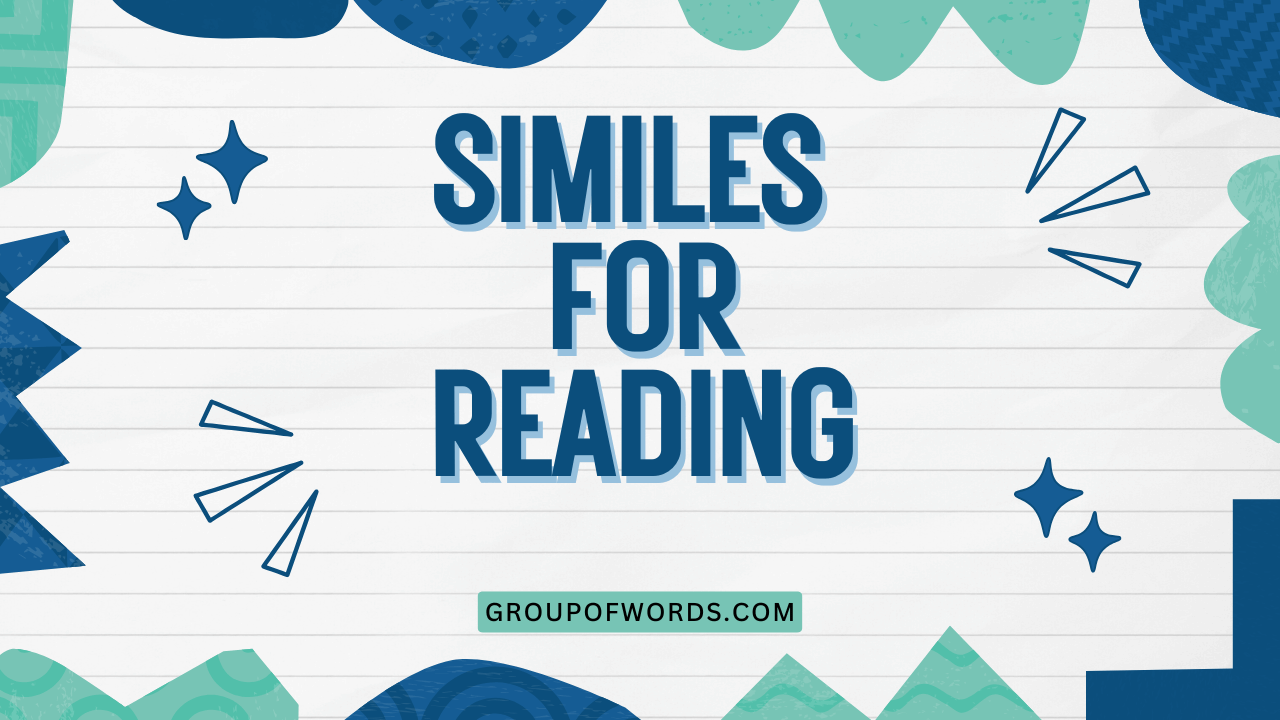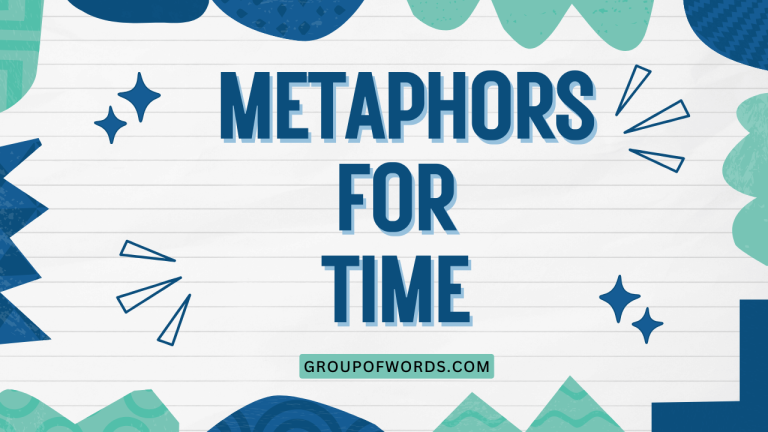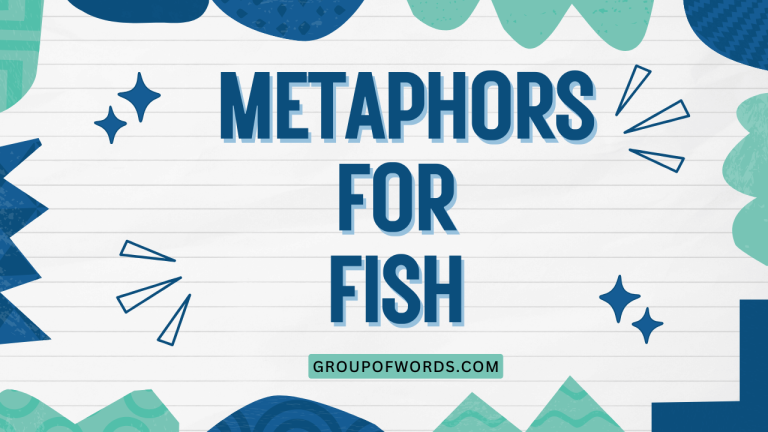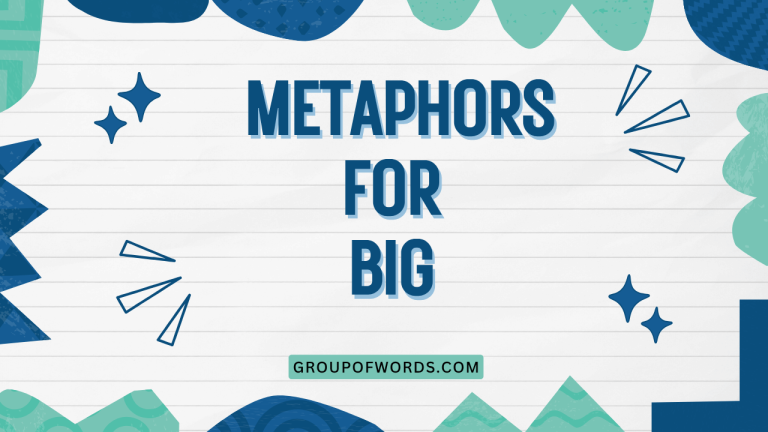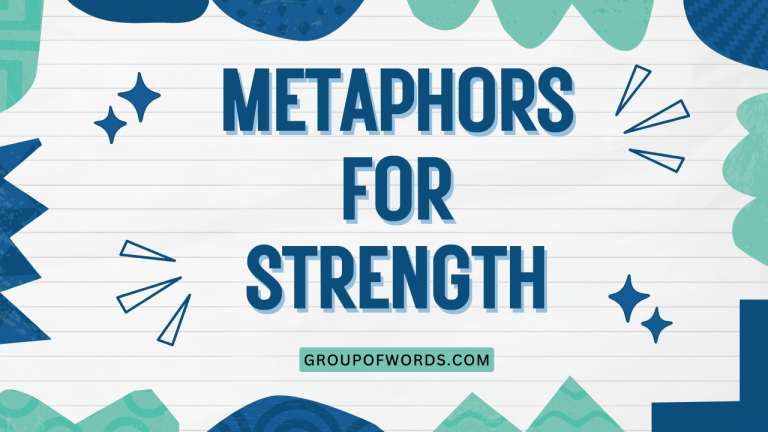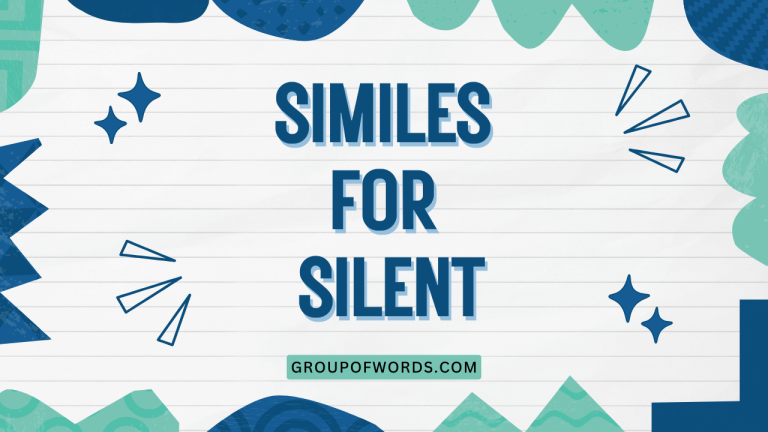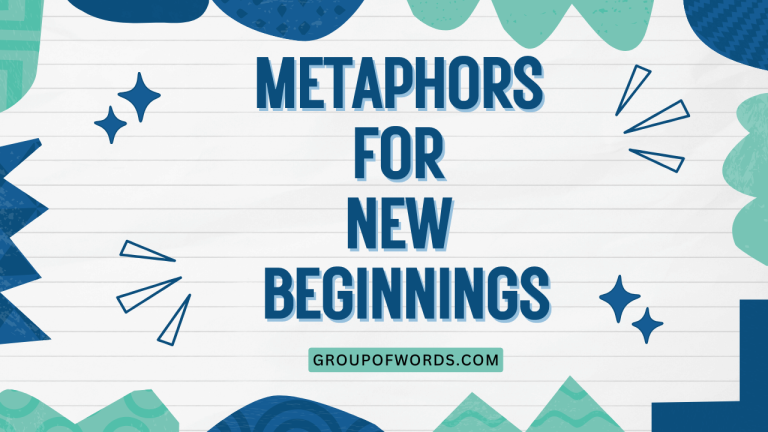Similes for Reading: Enhancing Comprehension and Expression
Similes are powerful literary devices that enrich our understanding and appreciation of language, especially in reading. By comparing one thing to another using “like” or “as,” similes create vivid imagery and add depth to written text.
Mastering the use and recognition of similes is crucial for improving reading comprehension, enhancing writing skills, and appreciating the nuances of figurative language. This article offers a comprehensive guide to similes, exploring their definition, structure, types, usage rules, common mistakes, and practical exercises to help you become proficient in their application.
Whether you’re an English language learner, a student, or simply a lover of literature, this article will provide valuable insights and practical tools to elevate your understanding and use of similes.
Table of Contents
- Introduction
- Definition of Similes
- Structural Breakdown of Similes
- Types of Similes
- Examples of Similes
- Usage Rules for Similes
- Common Mistakes with Similes
- Practice Exercises
- Advanced Topics: Extending Your Simile Knowledge
- Frequently Asked Questions (FAQ)
- Conclusion
Introduction
Similes are fundamental tools in writing and literature, serving as bridges that connect unfamiliar concepts to familiar ones. This connection enhances comprehension and makes the text more engaging.
A well-crafted simile can transform a mundane description into a vibrant scene, allowing readers to visualize and connect with the material on a deeper level. Understanding similes is not just about recognizing them; it’s about appreciating their impact and using them effectively in your own writing.
This article is designed to provide a comprehensive overview of similes, covering everything from their basic definition to more advanced usage techniques. Whether you’re a beginner looking to grasp the fundamentals or an experienced writer aiming to refine your skills, this guide will equip you with the knowledge and practice you need to master the art of simile.
By exploring numerous examples, practical exercises, and common pitfalls, you’ll gain a solid understanding of how to identify, interpret, and create compelling similes.
Definition of Similes
A simile is a figure of speech that compares two unlike things using the words “like” or “as.” The purpose of a simile is to create a vivid image or convey a specific characteristic by associating it with something more familiar. It is a direct comparison, explicitly stating the resemblance between two distinct entities.
Similes are classified as a type of figurative language, which means they deviate from the literal meaning of words to create a more imaginative and impactful effect. They function to enhance description, clarify meaning, and evoke emotions in the reader.
The context in which a simile is used greatly influences its effectiveness; a well-chosen simile can significantly elevate the quality of writing, while a poorly constructed one can detract from it.
Classification of Similes
Similes fall under the broader category of figures of speech, specifically within the subcategory of comparisons. Other related figures of speech include metaphors, analogies, and personification. While all these devices involve comparing different things, similes are unique in their explicit use of “like” or “as” to make the comparison clear.
Function of Similes
The primary function of a simile is to enhance understanding and create vivid imagery. By comparing something unfamiliar to something familiar, similes help readers grasp complex concepts more easily. They also add color and depth to writing, making it more engaging and memorable. A well-crafted simile can evoke emotions, create a specific mood, and add layers of meaning to the text.
Contexts for Using Similes
Similes are widely used in various contexts, including:
- Literature: Novels, poems, and short stories often use similes to enhance descriptions, develop characters, and create atmosphere.
- Everyday Speech: Similes are common in everyday conversations to explain things, express feelings, and make comparisons.
- Advertising: Advertisers use similes to make their products more appealing and memorable.
- Journalism: While less common in formal news writing, similes can be used in feature articles or opinion pieces to add color and personality.
- Technical Writing: Similes can be helpful in technical writing to explain complex concepts in a more accessible way.
Structural Breakdown of Similes
A simile typically consists of three main components: the subject, the linking word (“like” or “as”), and the object of comparison. The subject is the thing being described, and the object of comparison is the thing it is being compared to. The linking word explicitly states the comparison.
Understanding the structural elements of a simile is crucial for both recognizing and creating effective similes. By identifying each component, you can analyze how the simile works and evaluate its impact.
This knowledge also allows you to construct your own similes with greater precision and creativity.
Subject
The subject is the entity being described or compared. It is the focal point of the simile and the thing that the writer wants to illuminate.
The subject can be a person, place, thing, idea, or concept.
Linking Word
The linking word is either “like” or “as.” These words explicitly indicate that a comparison is being made. The choice between “like” and “as” often depends on the specific construction of the simile, but both serve the same fundamental purpose.
Object of Comparison
The object of comparison is the entity that the subject is being compared to. It is typically something familiar or easily understood that shares a common characteristic with the subject.
The object of comparison helps to clarify and enhance the description of the subject.
For example, in the simile “The runner was as fast as a cheetah,” the subject is “the runner,” the linking word is “as,” and the object of comparison is “a cheetah.” This simile compares the runner’s speed to the speed of a cheetah, highlighting the runner’s exceptional swiftness.
Types of Similes
While all similes share the basic structure of comparing two unlike things using “like” or “as,” they can be categorized based on their function and the type of comparison they make. Understanding these different types can help you appreciate the versatility of similes and use them more effectively in your writing.
Descriptive Similes
Descriptive similes are used to provide a more vivid and detailed description of the subject. They focus on highlighting specific qualities or characteristics of the subject by comparing it to something with similar attributes.
These similes often appeal to the senses, creating a more immersive experience for the reader.
Explanatory Similes
Explanatory similes are used to clarify or explain a concept by comparing it to something more familiar or easily understood. They are particularly useful for simplifying complex ideas or making abstract concepts more concrete.
These similes often focus on functional similarities between the subject and the object of comparison.
Emotional Similes
Emotional similes are used to evoke specific emotions or create a particular mood. They compare the subject to something that elicits a similar emotional response in the reader.
These similes often rely on subjective associations and can be highly effective in creating a powerful emotional impact.
Examples of Similes
To illustrate the different types of similes and their applications, here are several examples organized into tables. These examples cover a wide range of subjects and objects of comparison, demonstrating the versatility of similes in various contexts.
Descriptive Similes Examples
The following table provides examples of descriptive similes, focusing on vivid and detailed descriptions:
| Simile | Explanation |
|---|---|
| The sky was as blue as a sapphire. | Compares the sky’s color to the deep blue of a sapphire. |
| Her hair was like spun gold. | Compares the hair’s color and texture to the precious metal. |
| The wind howled like a wolf. | Compares the sound of the wind to the howling of a wolf. |
| The snow was as white as a sheet. | Compares the snow’s color to the pure white of a sheet. |
| His eyes were like pools of deep water. | Compares the depth and color of his eyes to deep water. |
| The coffee was as bitter as medicine. | Compares the coffee’s taste to the unpleasant taste of medicine. |
| The sun shone like a spotlight. | Compares the sun’s brightness to a spotlight. |
| The leaves rustled like whispers. | Compares the sound of leaves to quiet whispers. |
| The city was as quiet as a graveyard. | Compares the city’s silence to the quiet of a graveyard. |
| Her skin was as smooth as silk. | Compares the texture of her skin to the smoothness of silk. |
| The rain fell like tears. | Compares the falling rain to the visual of tears. |
| The actor moved like a panther. | Compares the actor’s movement to the grace of a panther. |
| The music flowed like a river. | Compares the movement of the music to a flowing river. |
| The bread felt like a stone. | Compares the bread’s texture to the hardness of a stone. |
| The baby’s laughter was like bells. | Compares the sound of the laughter to the sound of bells. |
| The old house stood as still as a statue. | Compares the house’s stillness to a statue’s immobility. |
| The forest was as dark as night. | Compares the forest’s darkness to the darkness of night. |
| The cake was as light as a feather. | Compares the cake’s texture to the weightlessness of a feather. |
| The crowd roared like a storm. | Compares the intensity of the crowd to a storm. |
| The lake shimmered like diamonds. | Compares the lake’s appearance to the sparkle of diamonds. |
| The air smelled like pine needles. | Compares the scent of the air to the scent of pine needles. |
| The moon hung like a silver coin. | Compares the appearance of the moon to a coin. |
| The fog was as thick as pea soup. | Compares the fog’s density to pea soup. |
| The dessert was as sweet as honey. | Compares the dessert’s sweetness to honey. |
| The athlete was as strong as an ox. | Compares the athlete’s strength to an ox. |
| The dancer moved like smoke. | Compares the dancer’s movement to smoke. |
| The flowers were like velvet. | Compares the flower’s texture to velvet. |
Explanatory Similes Examples
The following table provides examples of explanatory similes, focusing on clarifying complex ideas:
| Simile | Explanation |
|---|---|
| Learning a new language is like climbing a mountain. | Compares the process of learning a language to the challenging task of climbing a mountain. |
| Life is like a box of chocolates; you never know what you’re going to get. | Compares life’s unpredictability to the varied contents of a chocolate box. |
| Explaining quantum physics is like trying to nail jelly to a wall. | Compares the difficulty of explaining quantum physics to the impossibility of nailing jelly to a wall. |
| Managing a project is like juggling multiple balls. | Compares project management to the skill of juggling, emphasizing the need for coordination and balance. |
| The human brain is like a computer; it processes information. | Compares the brain’s function to a computer’s processing capabilities. |
| A company without a strategy is like a ship without a rudder. | Compares a company lacking a strategy to a ship without direction. |
| Arguments with him are like wrestling a pig in mud: Sooner or later you realize that the pig likes it. | Compares arguing with someone stubborn to an unpleasant experience. |
| Public speaking is like walking a tightrope. | Compares speaking in public to the need for balance and focus. |
| Love is like a garden; it needs care and attention to grow. | Compares love to a garden, emphasizing the need for nurturing. |
| Writing a novel is like building a house. | Compares the writing process to the step-by-step construction of a house. |
| Trying to convince him is like talking to a brick wall. | Compares the futility of trying to convince someone stubborn to talking to an inanimate object. |
| The internet is like a vast library. | Compares the internet’s vastness to a library. |
| Investing in the stock market is like gambling. | Compares investing to the risks of gambling. |
| Parenting is like being a referee in a boxing match. | Compares parenting to the chaos of refereeing. |
| Marriage is like a long road trip. | Compares marriage to the journey of a long road trip. |
| Friendship is like a delicate flower. | Compares friendship to the fragility and care needed for a flower. |
| The legal system is like a maze. | Compares the complexity of the legal system to a maze. |
| Bureaucracy is like wading through molasses. | Compares the slow pace of bureaucracy to molasses. |
| Understanding politics is like decoding a secret language. | Compares the complexity of politics to decoding a secret language. |
| The economy is like a roller coaster. | Compares the ups and downs of the economy to a roller coaster. |
| Sleep is like a reset button for the brain. | Compares sleep to a reset button. |
| Regret is like a shadow. | Compares regret to a shadow. |
| Forgiveness is like setting a prisoner free. | Compares forgiveness to freedom. |
| Dreams are like stars. | Compares dreams to stars. |
| Hope is like a lighthouse. | Compares hope to a beacon. |
| Grief is like an ocean. | Compares grief to an ocean. |
| Time is like a thief. | Compares time to a thief. |
Emotional Similes Examples
The following table provides examples of emotional similes, focusing on evoking feelings:
| Simile | Explanation |
|---|---|
| He felt as lonely as a cloud. | Compares the feeling of loneliness to the isolation of a single cloud. |
| Her heart felt like lead. | Compares the emotional weight of her sadness to the heaviness of lead. |
| He was as nervous as a long-tailed cat in a room full of rocking chairs. | Compares his nervousness to the precarious situation of a cat in a room full of rocking chairs. |
| She felt like a fish out of water. | Compares her feeling of displacement to a fish’s inability to survive out of water. |
| His anger was like a raging fire. | Compares his intense anger to the destructive force of a fire. |
| She felt as happy as a clam. | Compares her happiness to the supposed contentment of a clam. |
| He was as restless as a hummingbird. | Compares his restlessness to the constant movement of a hummingbird. |
| She felt like she was walking on air. | Compares her joy to the feeling of weightlessness. |
| His disappointment was like a cold shower. | Compares his disappointment to an unpleasant surprise. |
| She felt as vulnerable as a newborn. | Compares her vulnerability to a newborn. |
| He was as excited as a kid in a candy store. | Compares his excitement to a child’s joy. |
| She felt like she had been hit by a truck. | Compares her feeling of exhaustion to being hit. |
| His fear was like a cold hand on his heart. | Compares his fear to a physical sensation. |
| She felt as free as a bird. | Compares her feeling of freedom to a bird. |
| He was as quiet as a mouse. | Compares his quietness to a mouse. |
| She felt like she was drowning. | Compares her feeling of being overwhelmed to drowning. |
| His sadness was like a heavy cloak. | Compares his sadness to a heavy cloak. |
| She felt as light as a balloon. | Compares her lightness to a balloon. |
| He was as stubborn as a mule. | Compares his stubbornness to a mule. |
| She felt like she was in a dream. | Compares her feeling to a dream. |
| His embarrassment was like a spotlight. | Compares his embarrassment to a spotlight. |
| She felt as lost as a sheep. | Compares her feeling of lostness to that of a sheep. |
| He was as steady as a rock. | Compares his steadiness to a rock. |
| She felt like she was floating. | Compares her feeling to floating. |
| His relief was like a breath of fresh air. | Compares his relief to fresh air. |
| Her confusion was like a fog. | Compares her confusion to a fog. |
| He was as sly as a fox. | Compares his slyness to a fox. |
Usage Rules for Similes
Using similes effectively requires adherence to certain rules to ensure clarity, impact, and appropriateness. These rules cover aspects such as avoiding cliches, maintaining logical comparisons, and considering the context in which the simile is used.
By following these usage rules, you can create similes that enhance your writing and effectively communicate your intended message. Ignoring these rules can lead to weak, confusing, or inappropriate similes that detract from the overall quality of your work.
Avoiding Clichés
A cliché is an overused expression that has lost its original impact. Using cliché similes can make your writing sound unoriginal and uninspired.
It’s important to strive for fresh and creative comparisons that will engage the reader and add a unique perspective.
Examples of cliché similes include “as blind as a bat,” “as busy as a bee,” and “as quiet as a mouse.” While these similes are easily understood, they lack originality and fail to create a strong impression.
Maintaining Logical Comparisons
A simile should compare two things that share a relevant characteristic. The comparison should be logical and make sense to the reader.
Avoid comparing things that have no clear connection or that create a confusing or nonsensical image.
For example, comparing “a car” to “a tree” might not be a logical comparison unless you are focusing on a specific shared characteristic, such as their potential for providing shade or shelter. However, comparing “a car” to “a rocket” to describe speed would be very logical.
Considering Context
The effectiveness of a simile depends on the context in which it is used. Consider the audience, the tone of the writing, and the overall message you are trying to convey.
A simile that works well in one context may be inappropriate in another.
For example, a humorous simile might be suitable for a lighthearted essay but inappropriate for a serious academic paper. Similarly, a simile that relies on specific cultural references may not be effective for an international audience.
Using Appropriate Tone
The tone of your simile should match the overall tone of your writing. Avoid using similes that are too informal or too serious for the context.
The simile should complement the tone of the piece and enhance its overall impact.
For example, in a formal business report, a simile like “the project was as smooth as butter” might be too informal. A more appropriate simile might be “the project progressed as efficiently as a well-oiled machine.”
Common Mistakes with Similes
Even with a solid understanding of the rules, it’s easy to make mistakes when using similes. Recognizing these common errors can help you avoid them and improve the quality of your writing.
This section highlights some of the most frequent mistakes people make when using similes, along with examples of correct and incorrect usage. By understanding these pitfalls, you can refine your simile skills and craft more effective and impactful comparisons.
Mixing Metaphors and Similes
A common mistake is confusing similes with metaphors. Remember that similes use “like” or “as” to make a direct comparison, while metaphors imply a comparison without using these words.
| Incorrect | Correct | Explanation |
|---|---|---|
| The politician was a lion, like he roared. | The politician roared like a lion. | Mixing a metaphor (“The politician was a lion”) with a simile (“like he roared”). |
| Her voice was a song, as sweet as honey. | Her voice was as sweet as honey. | Mixing a metaphor (“Her voice was a song”) with a simile (“as sweet as honey”). |
Using Illogical Comparisons
Ensure that the comparison you are making is logical and makes sense. Avoid comparing things that have no clear connection or that create a confusing image.
| Incorrect | Correct | Explanation |
|---|---|---|
| The building was as tall as a feeling. | The building was as tall as a skyscraper. | Comparing a physical object (“building”) to an abstract concept (“feeling”). |
| His argument was as sharp as a cloud. | His argument was as sharp as a razor. | Comparing an argument to something that has no sharpness (“cloud”). |
Overusing Similes
While similes can enhance your writing, using too many can make it feel forced and unnatural. Use similes sparingly and only when they add real value to your descriptions.
| Incorrect | Correct | Explanation |
|---|---|---|
| The day was as bright as the sun. The birds sang like angels. The flowers bloomed like dreams. | The bright day featured singing birds and blooming flowers. | Overusing similes in a short passage. |
| The rain fell like tears, and the wind howled like a wolf, and the trees swayed like dancers. | The rain fell heavily, and the wind howled, making the trees sway. | Too many similes in one sentence. |
Practice Exercises
To solidify your understanding of similes, complete the following practice exercises. Each exercise focuses on different aspects of simile usage, from identifying similes to creating your own.
These exercises are designed to help you apply the knowledge you’ve gained throughout this article. Take your time, think carefully about each question, and refer back to the previous sections if needed.
The answers are provided at the end of each exercise to help you check your work.
Exercise 1: Identifying Similes
Identify the similes in the following sentences:
| Question | Answer |
|---|---|
| 1. The car was as red as a fire engine. | as red as a fire engine |
| 2. Her laughter filled the room. | (No simile) |
| 3. He ran like the wind. | like the wind |
| 4. The moon was a silver coin in the sky. | (No simile, this is a metaphor) |
| 5. She was as gentle as a lamb. | as gentle as a lamb |
| 6. The music flowed like a river. | like a river |
| 7. His words cut like a knife. | like a knife |
| 8. The city never sleeps. | (No simile) |
| 9. The news hit him like a ton of bricks. | like a ton of bricks |
| 10. Her smile was as bright as the sun. | as bright as the sun |
Exercise 2: Completing Similes
Complete the following similes with an appropriate object of comparison:
| Question | Answer |
|---|---|
| 1. He was as strong as _____. | an ox |
| 2. She sang like _____. | an angel |
| 3. The snow was as white as _____. | a sheet |
| 4. The coffee was as bitter as _____. | medicine |
| 5. The baby slept like _____. | a log |
| 6. The old man moved as slow as _____. | a turtle |
| 7. The student was as smart as _____. | a whip |
| 8. The car was as fast as _____. | a race car |
| 9. The project went as smooth as _____. | butter |
| 10. The child was as happy as _____. | a lark |
Exercise 3: Creating Similes
Create your own similes to describe the following:
| Question | Example Answer |
|---|---|
| 1. A crowded room | A crowded room was like a can of sardines. |
| 2. A difficult task | A difficult task was like climbing Mt. Everest. |
| 3. A beautiful sunset | A beautiful sunset was like a painting. |
| 4. A loud noise | A loud noise was like a thunderclap. |
| 5. A calm sea | A calm sea was like a mirror. |
| 6. A warm fire | A warm fire was like a hug. |
| 7. A dark night | A dark night was like a black velvet cloth. |
| 8. A sweet taste | A sweet taste was like honey. |
| 9. A soft touch | A soft touch was like a feather. |
| 10. A cold wind | A cold wind was like ice. |
Advanced Topics: Extending Your Simile Knowledge
For advanced learners, exploring the nuances and complexities of similes can lead to a deeper appreciation of their power and versatility. This section delves into more advanced topics, such as extended similes, the use of similes in poetry, and the cultural variations in simile usage.
Extended Similes
An extended simile is a simile that is developed over several lines or sentences. Instead of making a brief comparison, an extended simile elaborates on the similarities between the subject and the object of comparison, creating a more detailed and impactful image.
Extended similes are often used in poetry and prose to create vivid imagery and add depth to the writing. They allow the writer to explore the comparison in more detail, highlighting multiple aspects of the subject and object of comparison.
Similes in Poetry
Similes are a common and effective tool in poetry, used to create imagery, evoke emotions, and add layers of meaning to the poem. Poets often use similes to compare abstract concepts to concrete objects, making them more accessible and relatable to the reader.
The use of similes in poetry can also contribute to the rhythm and flow of the poem, adding to its overall aesthetic appeal. A well-chosen simile can elevate a poem from ordinary to extraordinary, creating a lasting impression on the reader.
Cultural Variations in Simile Usage
The effectiveness of a simile can vary depending on the cultural background of the reader. Some comparisons may be more meaningful or relatable in one culture than in another.
It’s important to be aware of these cultural variations when using similes, especially when writing for a diverse audience.
For example, a simile that relies on specific cultural references or idioms may not be easily understood by someone from a different culture. In such cases, it may be necessary to adapt the simile or use a different comparison that is more universally understood.
Frequently Asked Questions (FAQ)
This section addresses some frequently asked questions about similes, providing clear and concise answers to common queries.
- What is the difference between a simile and a metaphor?
A simile is a direct comparison between two unlike things using “like” or “as,” while a metaphor implies a comparison without using these words. For example, “He is like a lion” is a simile, while “He is a lion” is a metaphor. The key difference lies in the explicitness of the comparison.
- How can I avoid using cliché similes?
To avoid clichés, strive for originality in your comparisons. Think about unique and unexpected ways to describe something. Instead of “as busy as a bee,” try “as busy as a one-armed paper hanger” (though even that is becoming cliché!). The more specific and unusual your comparison, the more impact it will have.
- Can a simile be too long?
Yes, a simile can be too long if it becomes overly descriptive and detracts from the main point. While extended similes can be effective, they should be used judiciously and only when they add significant value to the writing. The length of the simile should be appropriate for the context and purpose of the writing.
- Is it okay to use similes in formal writing?
Yes, similes can be used in formal writing, but they should be used sparingly and with careful consideration of the tone and audience. Avoid using overly informal or colloquial similes in formal contexts. Choose comparisons that are appropriate for the subject matter and the level of formality.
- How do I choose the right object of comparison for a simile?
Choose an object of comparison that shares a relevant characteristic with the subject and that is easily understood by the reader.
The comparison should be clear and logical, and it should enhance the description or explanation you are trying to convey. Consider the audience and their familiarity with the object of comparison.
Conclusion
Similes are indispensable tools for writers and readers alike. They enhance comprehension, evoke vivid imagery, and add depth to written text.
By mastering the art of simile, you can elevate your writing skills and appreciate the nuances of figurative language. This article has provided a comprehensive guide to similes, covering their definition, structure, types, usage rules, common mistakes, and practical exercises.
As you continue to explore the world of literature and language, remember the power of similes to connect the familiar with the unfamiliar, to illuminate complex ideas, and to create lasting impressions. Practice using similes in your own writing, and pay attention to how they are used by others.
With time and effort, you will become proficient in the art of simile, unlocking new levels of creativity and expression.
